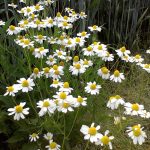
As summer arrives, wildlife takes on an altogether more relaxed approach and by the end of the month birds appear noticeably quieter as the main breeding season draws to a close. The sound of birdsong and the dawn chorus is replaced by the begging calls of fledglings. On very hot days you may even notice a blackbird seemingly sunbathing on a lawn or rockery. No one is really sure of the reason for this behaviour which frequently sees them lying with outstretched wings and tail under the full heat of the sun, but it is thought to be way of reducing the number of feather parasites. If you are fortunate enough to have a pond, then on hot days frogs and toads can often be found seeking out shade in adjacent vegetation or under a nearby log. Look out too for damselflies and dragonflies. As the weather warms they will emerge from what has until now been an entirely underwater life as a wingless immature. They frequently use emergent plants at the edge of the pond as a stairway between the water and their new life in the air.
In terms of Wildflowers, June can best be described as spectacular and sees more species flowering than in any month. If you’ve sown a meadow this spring and included Cornfield annuals then they should be at the peak of their bloom before the month is out with Corn Chamomile the first to appear later joined by Cornflower, Poppy, Corn Cockle and finally Corn Marigold. Meadows sown last year meanwhile, should normally give a good flush of Oxeye Daisy. This is the first perennial to appear and in subsequent years will be accompanied by more slow growing species such as primulas and trefoils.